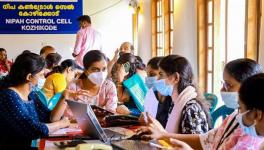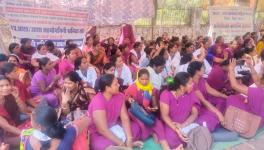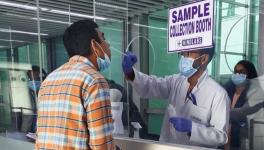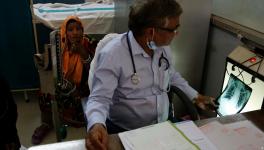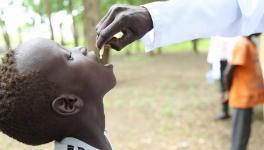Polio Eradication: The Way Forward
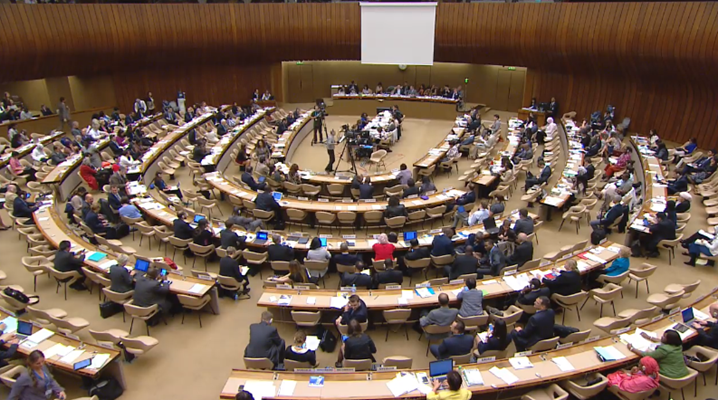
Representational Image. Image Courtesy: Global Polio Eradication Initiative
The article below is part of the ‘WHO-Watch’ program, which is an effort of the People’s Health Movement. The programme works towards democratising global governance for health and involving young activists in following the governing body meetings of the World Health Organisation – the Executive Board meeting in January and the World Health Assembly in May – every year.
Polio is a viral disease that affects children. The disease, caused by the wild polio virus, is commonly transmitted through faeco-oral route by either contaminated water or food. In a small percentage of those infected with polio virus, the disease causes permanent paralysis and disability. Polio does not have a cure and the only means of intervention is through prevention.
Global Response to Polio
In 1988, the World Health Assembly resolved to eradicate polio. The member states felt that there needs to be a global coordinated mechanism for implementing this decision. As a result, the Global Polio Eradication Initiative (GPEI) was launched in 1988 (estimates put the number of polio affected persons at 3,50,000 in that year). This initiative, which undertook to eradicate wild polio virus by the year 2000, is currently managed as a public-private partnership by the World Health Organisation, United Nation Children’s Fund (UNICEF), Rotary International, the US Centres for Disease Control and Prevention and the Bill & Melinda Gates Foundation.
Through the GPEI, WHO assisted the member states with immunisation campaigns, surveillance, supply chain management and health awareness. However, the first eradication target year was missed. In fact, the cases of wild polio virus were higher in the year 2010 when compared to year 2000. What followed later was a series of deadlines being missed to interrupt the transmission of polio. The deadline for interruption of transmission has been shifted multiple times: first to 2005, then 2012, then 2018 and now to 2020.
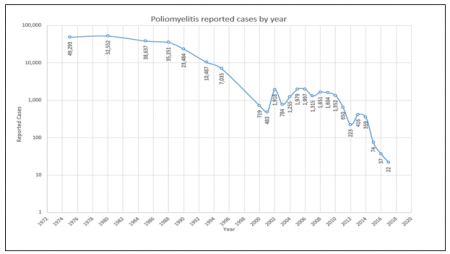
Though well intentioned, the interventions of GPEI only moved with a pace that any vertical or selective primary health care intervention could achieve. Issues such as poverty, war, conflict, attacks on health workers and anti-vaccination campaigns are some of the socio-economic determinants of health that have undermined the achievement of the GPEI objectives, and that are beyond the purview of the vertical or selective interventions it focuses on. These limitations point towards the necessity of focusing on comprehensive primary healthcare and improving the structural determinants of health as foundational interventions for eradicating polio.
Also read: Pakistan Suspends Polio Drive After Security Threats to Workers
Currently, wild polio virus is still endemic in Pakistan, Afghanistan and Nigeria. In 2018, wild polio virus cases were detected in Pakistan and Afghanistan.
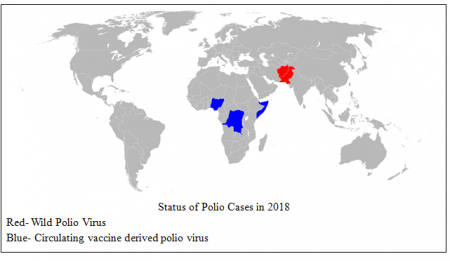
Polio at the 72nd World Health Assembly
The 72nd World Health Assembly noted the reports on polio eradication (wild polio) and polio transition. The report ‘Polio Eradication” focused on implementation of the GPEI Polio Endgame Strategy 2019–2023. Previously, the strategic plan 2013-2018 was supposed to take us to the completion of the eradication stage but as it failed to do so, the new endgame strategy 2019-2023 was developed (finalised early in 2019), which is based on finally interrupting wild polio virus transmission in 2020.
In the discussions, member states supported the proposals as mentioned in Polio Endgame Strategy 2019-23 and urged the WHO to mobilise the necessary resources in working towards the eradication of polio. It was also felt that the opportunity to eradicate polio should not be missed due to the fatigue created by constantly missing previous eradication deadlines.
Gabon, speaking for all of the countries of the African region, said that obtaining sufficient IPV has been challenging. Niger also raised a similar issue regarding accessibility of affordable vaccines.
The Way Forward
It is critical that wild polio is eradicated from the world and there is a need to support the GPEI with adequate funds and other resources, as achieving the last mile in eradicating polio takes the most effort.
Issues around transitioning polio funding to national health budgets in order to strengthen health systems and immunisation activities need more attention.
Crucially, eradication of polio must be supported by a focus on improving broader socio-economic determinants of health, notably infrastructure development in the area of water and sanitation, resolving violent conflicts, and creating economic systems that prioritise human and ecological health rather than economic growth.
[The above article is compiled with contributions from Alane Ribeiro (Brazil), Ana Vracar (Croatia), Ben Eder (UK), Sun Kim (South Korea), Stuti Pant (UK), Lucy Singh (UK), Maira Mathias (Brazil), Sophie Gepp (Germany) and Andrew Harmer (UK).]
Also read: World Health Assembly: Several Countries Pledge to Improve Access to Assistive Technologies
Get the latest reports & analysis with people's perspective on Protests, movements & deep analytical videos, discussions of the current affairs in your Telegram app. Subscribe to NewsClick's Telegram channel & get Real-Time updates on stories, as they get published on our website.











